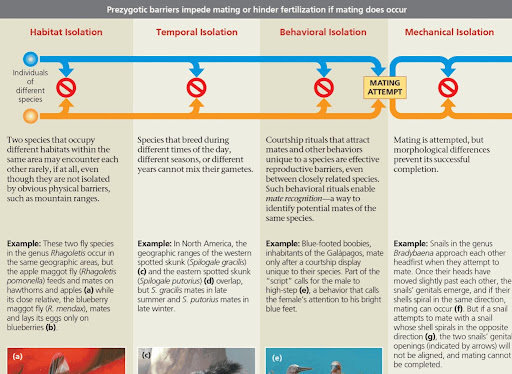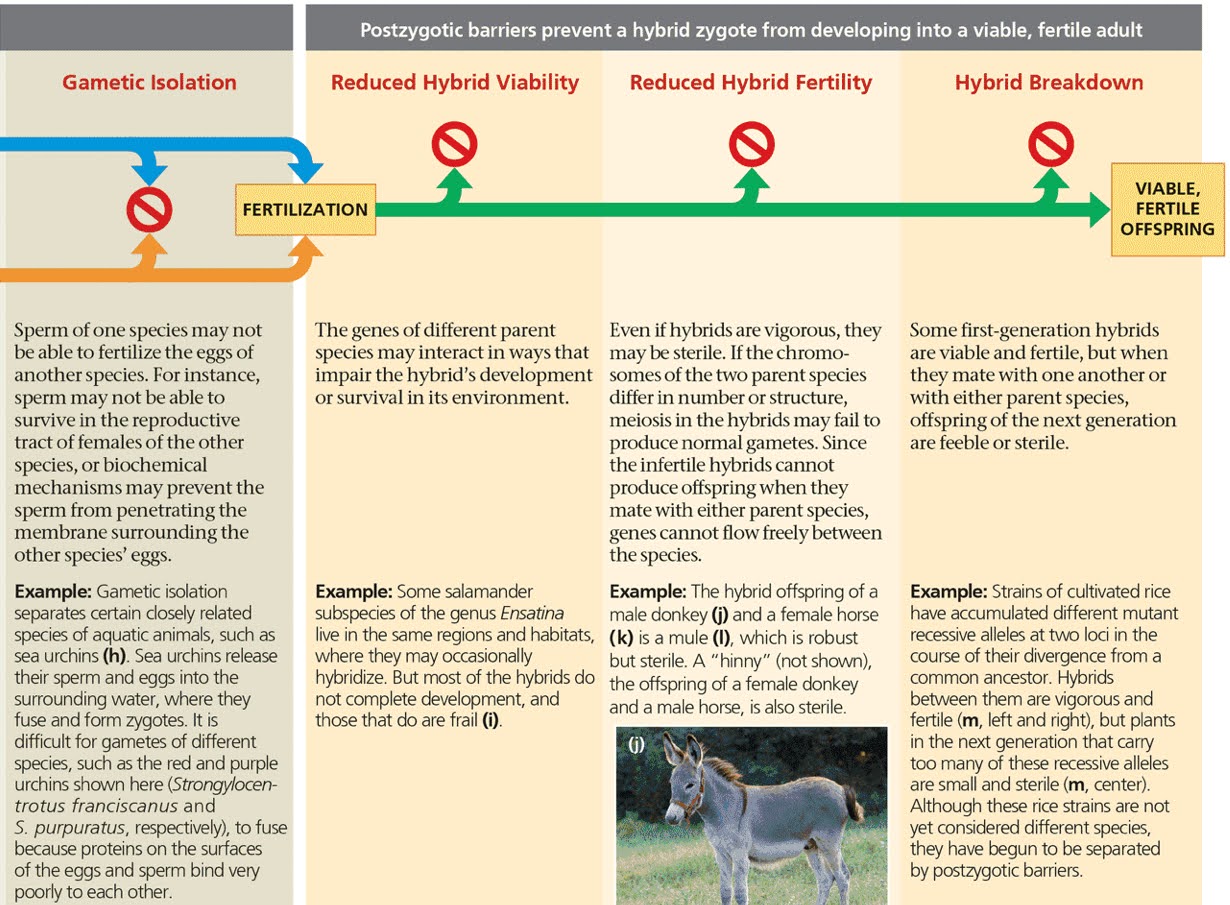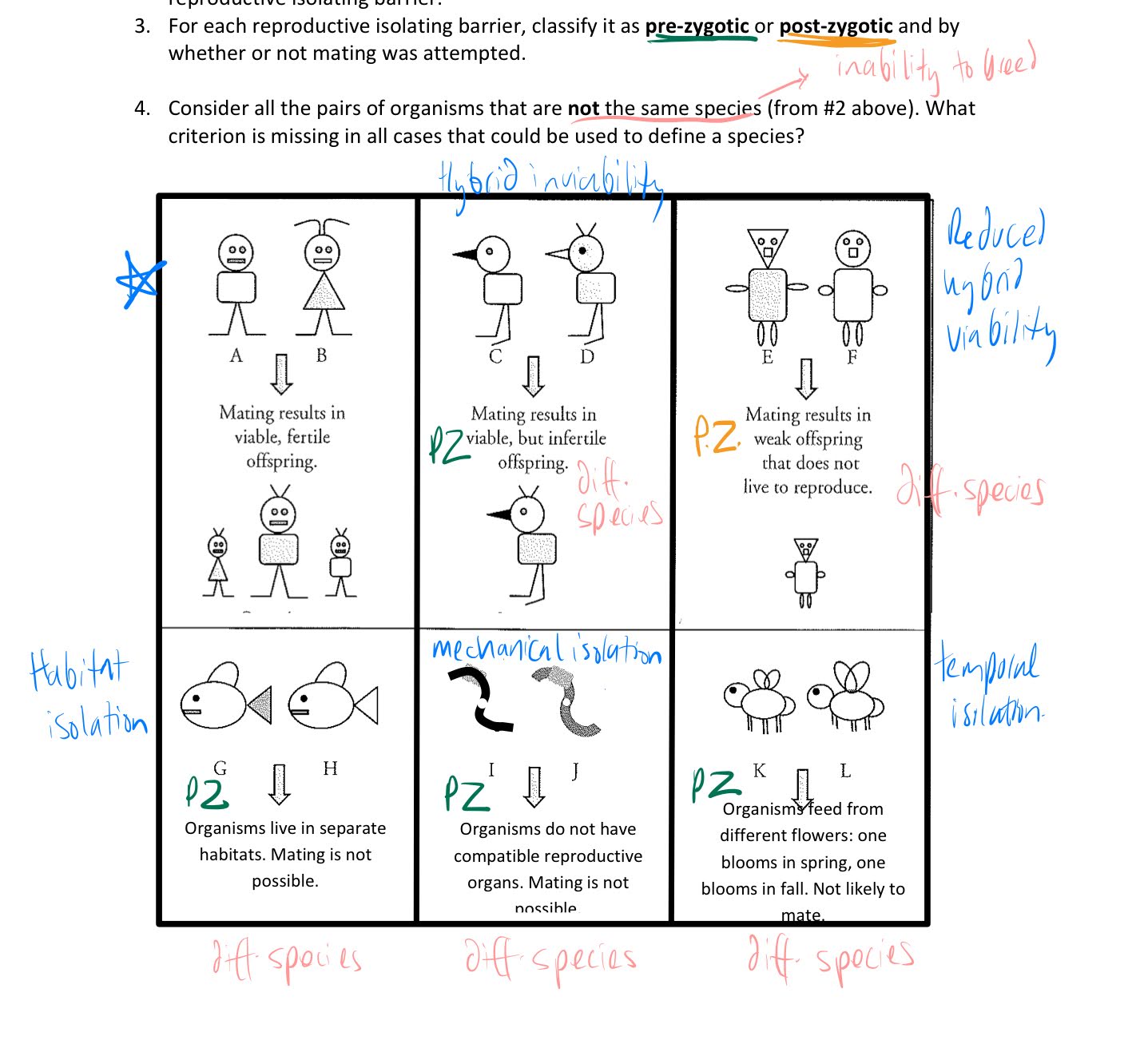BI223 Midterm: 4/9
1/10
Earn XP
Description and Tags
Learning Topic 4: What are species and how do they evolve?
Name | Mastery | Learn | Test | Matching | Spaced |
|---|
No study sessions yet.
11 Terms
Compare and contrast micro- and macro- evolution and define the organizational scale at which each works.
Microevolution occurs within a population (a group of toads divided by a road could begin to evolve)
Macroevolution occurs beyond a species over a longer period of time.
Both rely on mutation.
Compare and contrast the term "population" with "species."
Population — a group of individuals if a particular species is confined to a set geographical area.
Species — the smallest group of organisms that are so closely related they are able to breed and produce viable offspring.
Describe the methods for defining species and advantages and limitations of the Morphological Species Concept.
Defined in terms of measurable anatomical criteria (applies to asexual and sexual organisms). However, it relies on subjective criteria.
Describe the methods for defining species and advantages and limitations of the Ecological Species Concept.
Defined of a species in terms of ecological niche, the sum of how members of the species interact with the nonliving and living parts of their environment (applies to asexual and sexual organisms).
It emphasizes the role of disruptive natural selection as organisms adapt to different environments.
Describe the methods for defining species and advantages and limitations of the Biological Species Concept.
Definition of a species as a group of populations whose members have the potential to interbreed in nature and produce viable, fertile offspring, but do not produce viable, fertile offspring with members of other such groups.
One strength of the biological species concept is that it shows how speciation can occur through reproductive isolation. It does not apply to organisms that reproduce asexually (prokaryotes).
Species are designated by the absence of gene flow. However, natural selection can cause such species to remain distinct even though some gene flow occurs between them.
While the biological species concept emphasizes the separateness of different species due to reproductive barriers, several other definitions emphasize the unity within a species.
Compare and contrast allopatric speciation and sympatric speciation.
Allopatric Speciation: The formation of new species in populations that are geographically isolated from one another was r (can also occur without geologic remodeling i.e. a mountain). This isolation depends on the ability of the organisms to move around it. Once this isolation occurs, the separate gene pools may diverge. Different mutations arise, natural selection & genetic drift (variation of allele or disappearance all together) alter allele frequencies, and reproductive isolation may evolve as a by-product of genetic change.
Sympatric Speciation: the formation of new species in populations that live in the same geographic area. It can occur if gene flow is reduced by such factors as polyploidy, habitat differentiation, and sexual selection.
Explain the causes of sympatric speciation.
Polyploidy — a chromosomal alteration in which the organism possesses more than two complete chromosome sets. It is the result of an accident of cell division.
Habitat differentiation — when mutations allow individuals to exploit different conditions within the same environment (eg a longer-necked giraffe eats the tops of the trees)
Sexual selection
Describe and characterize the different types of pre-zygotic reproductive isolating barriers.
Pre-zygotic barrier: a reproductive barrier that impedes mating between species or hinders fertilization if interspecific mating is attempted.
Pre-zygotic barriers act in three ways:
Impeding members of different species from mating
Preventing an attempted mating from being successful
Hindering fertilization of successful mating

Describe and characterize the different types of post-zygotic reproductive isolating barriers.
Post-zygotic Barrier: A reproductive barrier that prevents hybrid zygotes produced by two different species from developing into viable, fertile adults.
Post-zygotic barriers would be:
Developmental errors that reduce embryo survival
Infertility after birth, decreasing the chance of reproduction.

Examine biological data and determine which type(s) of reproductive isolation is/are occurring.
(see worksheet 8 question 1)

Compare and contrast the three outcomes of closely related species attempting to mate.
Reduced Hybrid Viability: genes of the parent species may interact in ways that impair offspring development/survival.
Reduced Hybrid Fertility: even if the hybrid is healthy, still sterile, often due to differing chromosomes due to wonky gametes. Since they cannot mate with either parent species, gene flow does not occur. (Eg: mules)
Hybrid Breakdown: Some first generation hybrids are viable and fertile, but produce weak or sterile offspring in the second generation. (Eg dog breeding, when it begins to have strong dogs, over time the pup produced will be overbred and have genetic abnormalities.)